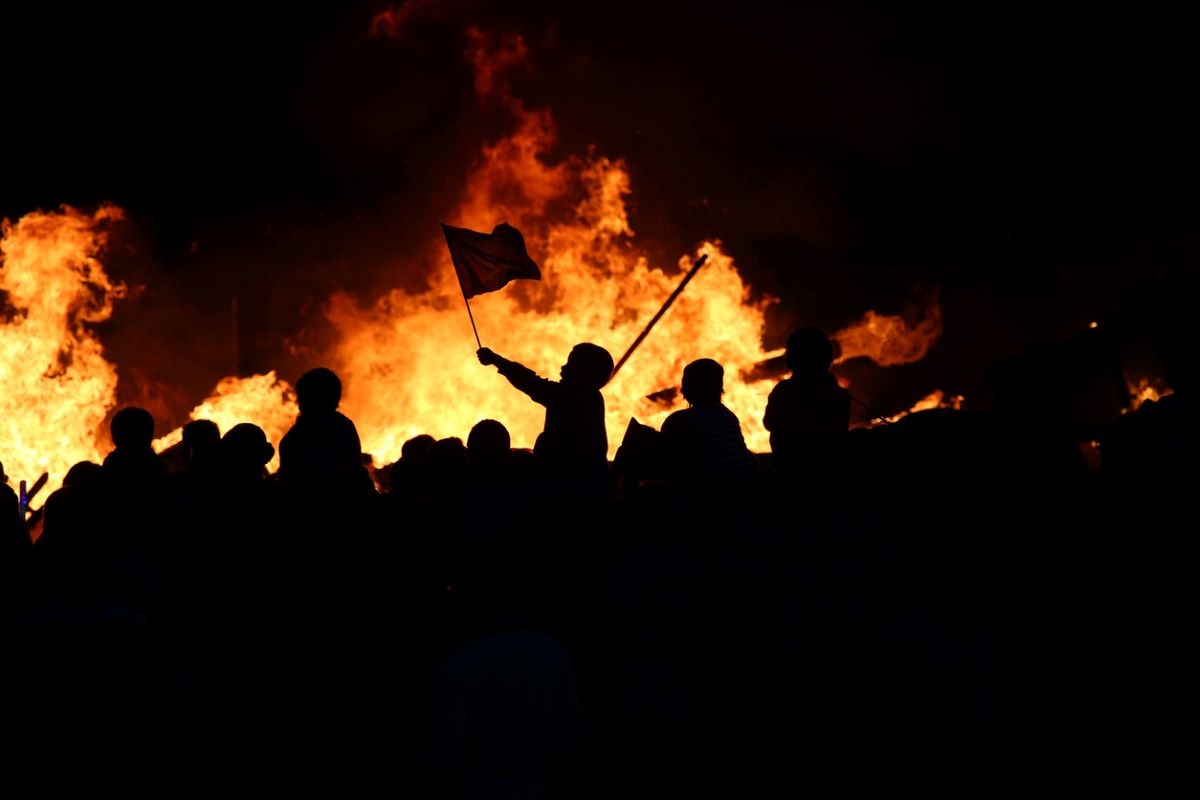Bangladesh has traditionally had a highly sensitive politico-religious fabric, where any developments within the country or in the Islamic world has had implications on the politics and religious contours of the Bangladeshi society.
The balance between those influenced by radical Islamic ideology and those from liberal democratic background in Bangladesh is a very fine line, which often gets blurred at a mere flash of an incident hinging on religious differences.
Advertisement
The latest incident of attacks by radical Muslim groups on various Durga puja sites in Bangladesh, starting from Comilla on October 13 and thereafter spreading to other areas, was a clear indication of rejuvenated radical sentiments taking over the conservative sections of the society.
One witnessed such strong radical Islamic sentiments in Bangladesh soon after the takeover of Afghanistan by the Taliban. The fact that a picture showing a copy of the Quran placed with the idols at one of the Durga Puja sites in Comilla could lead radical elements go on a rampage across the country portends serious dangers for the Bangladeshi society.
Significantly, even though the attacks appeared an abrupt reaction to the developments, the manner in which they were carried out indicated a well-planned strategy by the perpetrators, who were mostly students and teachers of madrasas from across the country. The ‘criminals’ coordinated their activities at different locations, including Chandpur, Feni, Noakhali, Chittagong, Cox’s Bazar and Sylhet.
In the eastern districts of Bangladesh, which happen to be the stronghold of Hefazat-e-Islam (HeI), concentrated attacks were witnessed in an organised manner, thereby indicative of a role by the HeI. The HeI has been under pressure from the government due to detention of several of its leaders and has been waiting on the sidelines looking for an opportunity to undertake such an action.
The group could have thus exploited the latest opportunity to convey a message to the larger conservative Muslim population and also to the government.
A number of Islamist organisations like the Islami Andolan Bangladesh, Khelafat-e-Majlish, and Ahl-e-Sunnat-Wal-Jamaat also condemned the apparent desecration of the Quran. The Jamaat-e-Islami (JeI) referred to the incident as a severe blow to the sentiments of the Muslims.
The possibility of militant outfits such as the Harkat-ul Jihad al-Islami (HuJI) and the Jamaat-ul-Mujahideen Bangladesh (JMB) also exploiting the situation to become more active will remain a major concern for the Bangladesh government.
In this backdrop, political parties such as the Bangladesh Nationalist Party (BNP) and the Jamaat-e-Isalmi would certainly exploit the narrative to build on their prospects and political agenda. A combined onslaught by the entire range of radical Islamic entities and opposition parties against the government will certainly pose a major challenge to the Awami League led by Prime Minister Sheikh Hasina.
The activities of these entities are thus more aimed at discrediting the Bangladesh government and the Awami League and building a narrative portraying the government as either incapable of or not prepared to defend the rights of the Muslims. The government has thus adopted a cautious stance, balancing the action in a manner that it does not get branded negatively.
In the past, one has seen the ISI coordinating with Bangladesh-based militant organisations through training, funding and providing weapons. The HuJI for instance had targeted Sheikh Hasina in the past, besides pro-liberation politicians, and can do so by building on the anti-government narrative being created now.
The combine of radical Islamist organisations along with the BNP/JeI and certain external forces would want to see a change in the present government and return to a more conservative political set-up that would cater enough space for the radicals in terms of governance.
Defending the nation against such aggressive radical trends would be a major challenge for the Bangladeshi security forces. They would be required to remain more agile and alert than in the normal course. If this adverse trend continues, entities such as the Ansar al-Islam (AaI), the Bangladesh chapter of Al Qaeda in the Indian sub-continent, are also likely to get active with the possible support of elements operating out of Afghanistan who are looking for newer bases in the region.
The HeI considers Taliban as its ideological friend and the Al Qaeda and ISIS have traditionally expressed their keenness to participate in armed battle in the Arakan state of Myanmar. In this scenario, experts in the security domain monitoring the developments in Bangladesh advice that there is need for Bangladesh to closely monitor the activities of HeI and its links with the Taliban and Al Qaeda, besides monitoring the activities of Bangladeshi nationals associated with the ISI.
The social media and electronic communication systems, which often play a catalyst to such negative developments, will also require close monitoring. Besides, militants, who have been released on bail as well as those having links from the past with Afghanistan-based groups/individuals, will also need to be monitored closely.
A worst case scenario that one could envisage would involve a coordinated and proactive action by these groups leading to a collapse of the security fabric. Such a situation could be marked by physical attacks on Hindus, Western and Indian entities and also on political leaders from the ruling party. This would undoubtedly put Bangladesh in dire crisis and wash away the tremendous successes it has achieved under the present government in every field.
















